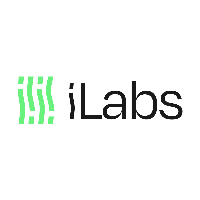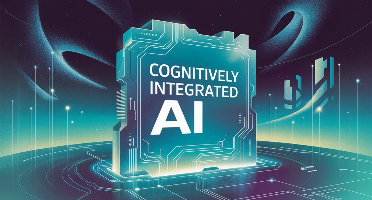Project details
Cognitively Integrated AI: An Information-Theoretic Approach to Creative Artificial General Intelligence
The Cognitively Integrated AI (CIAI) project introduces a groundbreaking framework for Artificial General Intelligence (AGI), uniting information theory with conceptual blending—an essential cognitive mechanism for human creativity. By integrating these within a distributed multi-agent architecture, CIAI directly tackles a key limitation in current AI systems: the absence of genuine creativity and coherent integration across knowledge domains. This proposal seeks funding to build and evaluate this novel framework, unlocking new frontiers in AGI research.
Problem Statement
Modern AI excels in narrow tasks but fails at generalizing across domains or demonstrating authentic creativity. Despite advances in multimodal models and large language systems, existing architectures still fall short in generating novel, context-aware ideas or simulating human-level innovation. There is a critical need for AGI systems that can blend knowledge creatively, adapt across tasks, and make sense of unfamiliar information—capabilities inherent to human cognition.
Core Innovation
CIAI proposes a multi-agent AGI framework where:
-
Information Theory serves as the core mechanism to measure novelty, coherence, and informativeness of concepts.
-
Conceptual Blending, inspired by human cognition, is computationally modeled to generate truly novel ideas.
-
Distributed Multi-Agent Architecture assigns distinct roles to specialized agents such as Retriever, Blender, Evaluator, Checker, and Orchestrator.
-
Fuzzy Formal Concept Analysis (FFCA) models uncertainty and overlapping concepts in knowledge graphs.
-
MeTTa and Atomspace from the OpenCog Hyperon platform provide the backbone for implementation, knowledge retrieval, and reasoning.
Scientific Foundations
Conceptual Blending
This theory explains how the human mind generates new ideas by merging input concepts from different domains into emergent, original structures. CIAI brings this process into AI via compositional algorithms that align, combine, and elaborate input spaces, resulting in outputs that reflect creative thought.
Information Theory
Shannon's entropy and mutual information are leveraged to drive concept selection and blending operations. The result is a system that balances uncertainty reduction with the emergence of surprising yet informative concepts—hallmarks of creative intelligence.
Fuzzy Formal Concept Analysis (FFCA)
FFCA enables nuanced knowledge representation. Unlike traditional logic systems, it allows AI to handle ambiguity, contradictions, and real-world uncertainty. It supports continuous knowledge evolution and is tightly integrated with OpenCog's Atomspace.
Multi-Agent Systems
CIAI uses specialized agents that communicate through shared knowledge graphs and orchestrated APIs. Their roles include:
-
Knowledge retrieval
-
Concept blending using information theory
-
Evaluation using LLMs (OpenAI, Gemini) for novelty
-
Coherence verification using MeTTa and FFCA
-
System-wide orchestration and workflow control
Technical Implementation
CIAI is built on OpenCog Hyperon, which enables scalable, distributed execution using Atomspace for knowledge representation and MeTTa for agent programming. The system is modular, fault-tolerant, and capable of parallel processing.
The Concept Blending Algorithm follows these steps:
-
Selection of Input Concepts using entropy-based diversity metrics.
-
Mapping and Alignment based on FFCA structure and knowledge graph relations.
-
Blending Operations guided by mutual information to maximize novelty.
-
Emergent Concept Generation, producing non-obvious ideas with new meaning.
-
Constraint Satisfaction ensures internal logical coherence and task relevance.
Evaluation Metrics
-
Novelty: Judged via LLM-based scores, semantic distance analysis, and concept frequency rarity.
-
Coherence: Assessed by logical rule violations and semantic consistency within blended outputs.
-
Relevance: Measured via vector alignment between output and original prompt goals.
Use Cases and Applications
CIAI can serve:
-
Creative industries (content generation, storytelling)
-
Education (adaptive tutoring systems)
-
Scientific discovery (cross-disciplinary idea fusion)
-
Smart assistants (context-aware, evolving dialogue agents)
-
Robotics and autonomous reasoning systems
Development Milestones
Key phases in the project include:
-
Month 1: Research, design planning, and compliance with funder requirements.
-
Months 2–3: Development of blending and FFCA modules, with early tests.
-
Month 4: Integration with Atomspace and system-level APIs.
-
Month 5: Evaluation via LLMs, human testing, and benchmark comparison.
-
Month 6: Final release with open-source documentation, demos, and research report.
Risk Management
CIAI anticipates and mitigates potential risks:
-
Integration complexity: Early prototyping and close coordination with OpenCog maintainers.
-
Evaluation subjectivity: Use of both AI (LLMs) and expert human feedback for validation.
-
Scalability issues: Microservice-based architecture and parallel workflows ensure load balancing.
-
Data biases: Inclusion of diverse data sources and algorithmic fairness checks.
-
System failure: Built-in fault recovery and task reassignment mechanisms handled by the Orchestrator agent.
Team Competence and Track Record
The core team has:
-
Over a decade of experience in AGI, NLP, distributed systems, and AI education.
-
Led projects in African NLP, computer vision, and AI for healthcare.
-
Recognized by Google Hackathons and international AI competitions.
-
Contributed to open-source AI infrastructure and research communities.
Funding Alignment and Strategic Fit
Strategic Fit for Funders
This project aligns with key funding priorities of:
-
DeepFunding: Direct relevance to SingularityNET and OpenCog infrastructure.
-
NSF: Fits Science of Learning and Artificial Intelligence/Cognitive Science initiatives.
-
DARPA: High-impact potential and focus on novel cognitive architectures.
Compliance with Funding Requirements
CIAI meets the criteria for:
-
Advanced concept generation algorithms
-
Information-theoretic implementation
-
Real-time multi-agent collaboration
-
Integration with MeTTa and Distributed Atomspace (DAS)
-
Scalable, fault-tolerant system design
-
Human and AI-driven evaluation framework
-
Open-source deliverables and extensible codebase
Future Outlook and Broader Impacts
CIAI lays the foundation for future AGI systems capable of:
-
Multimodal concept blending (text, image, audio)
-
Cross-lingual cultural reasoning
-
Scientific innovation and hypothesis generation
-
Ethical co-creation between human and machine
Its open architecture ensures long-term adaptability, making it a shared asset to the AI research community.
Conclusion
The Cognitively Integrated AI (CIAI) framework represents a paradigm shift in AGI design—merging neuroscience-inspired creativity with mathematically grounded decision-making. By enabling AI to generate coherent, innovative ideas across disciplines, CIAI brings us closer to building artificial intelligence that collaborates, creates, and learns like humans.
This proposal outlines a high-impact, technically feasible, and rigorously evaluated path to truly creative AGI. With strategic funding support, CIAI will pioneer a new class of AI systems that enrich scientific discovery, drive economic innovation, and elevate human potential through machine collaboration.


Reviews & Ratings
Join the Discussion (0)
Please create account or login to post comments.